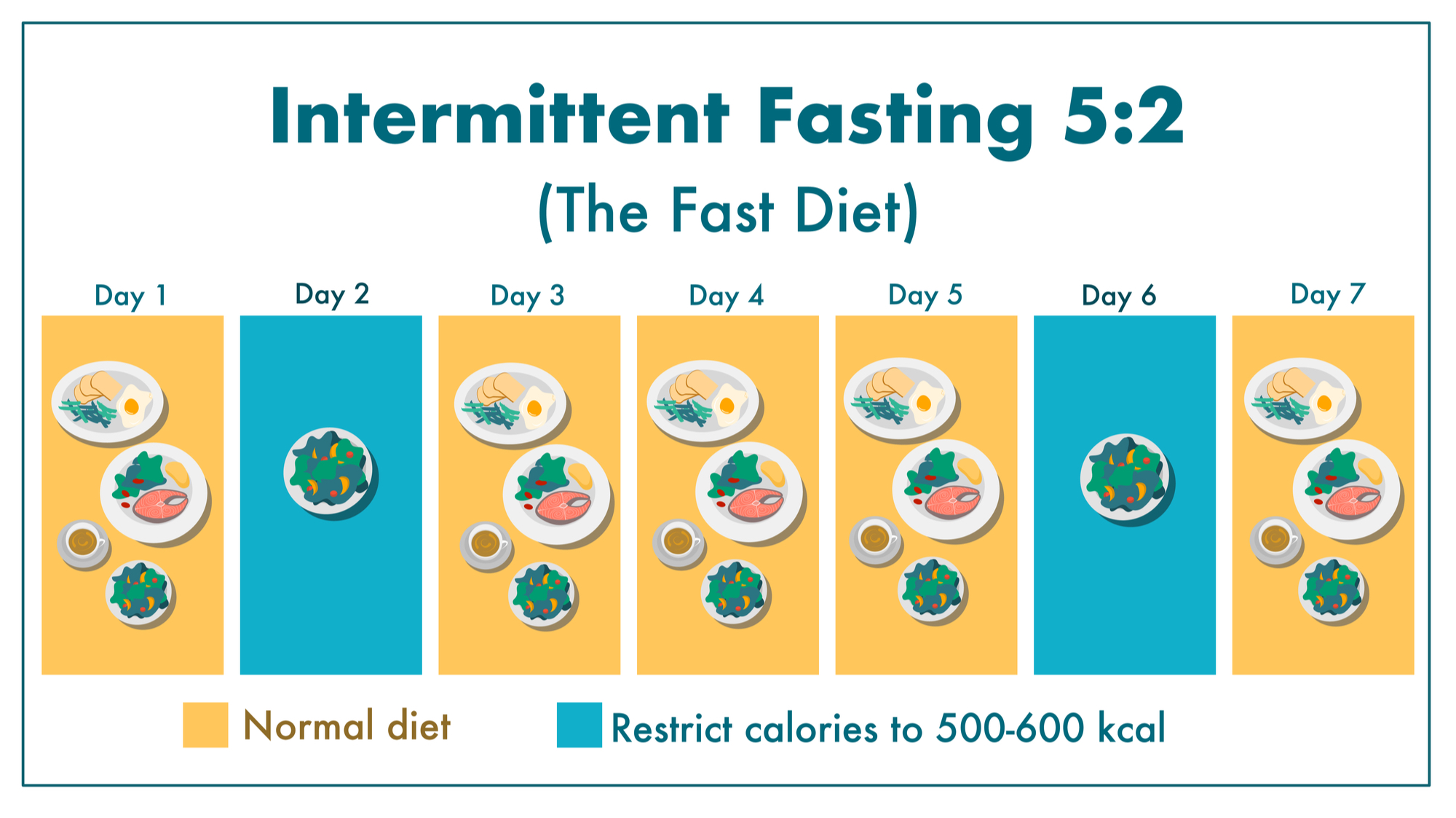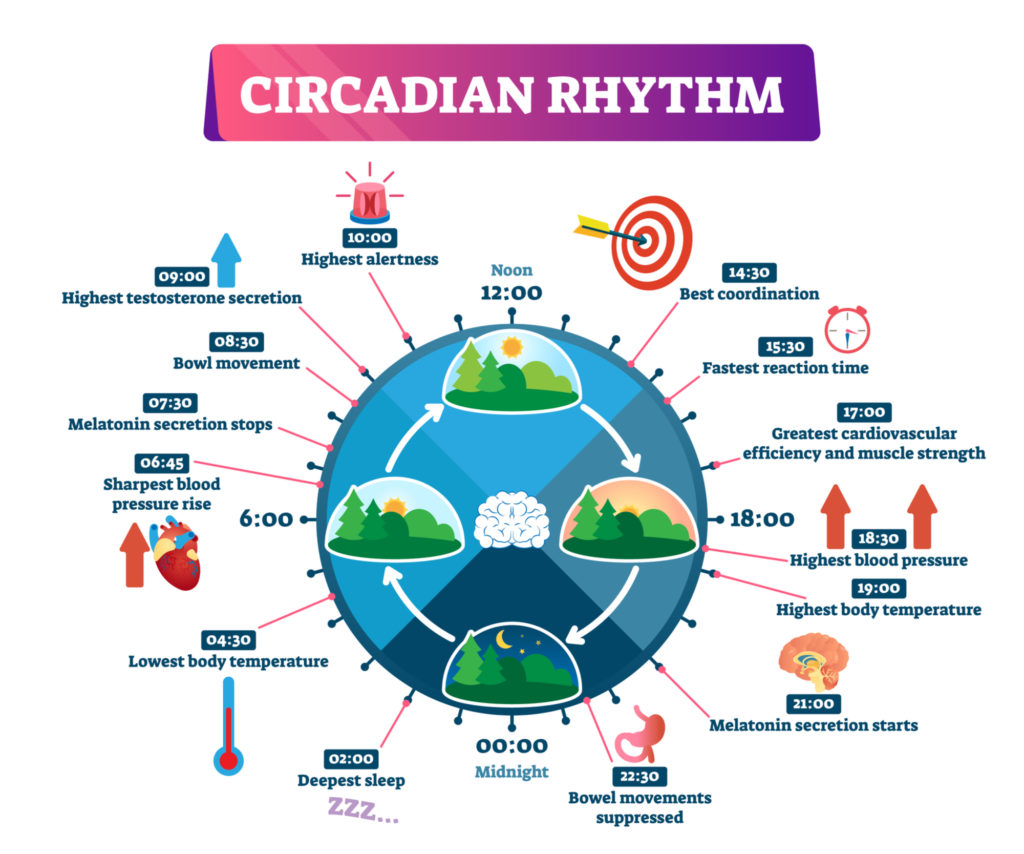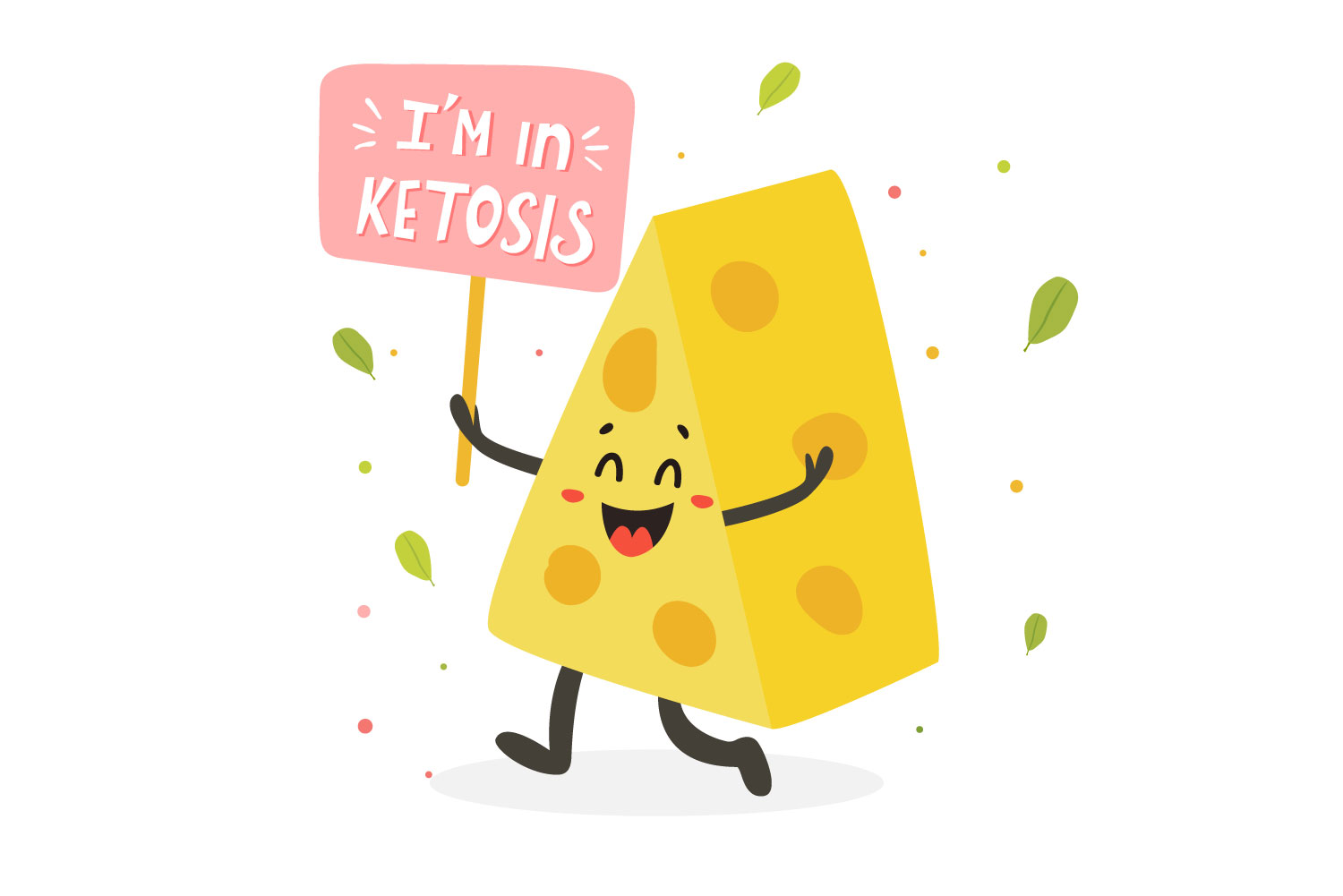SUMMARY
Intermittent fasting can improve wellness and productivity in astonishing ways. It can help boost cognition, and studies show it can reverse the effects of aging.
Many of us are forever on the lookout for a hack that will give us an edge in today’s competitive world.
Sometimes even a small change in your daily routine can reap big rewards when it comes to things such as health and productivity.
With that in mind, a lot of people these days have been singing the praises of intermittent fasting (IF). Intermittent fasting is an approach to eating that takes old ideas regarding breakfast, lunch and dinner and turns them on their head.
Can IF improve your health and make you more productive on the job? Is it able to reverse aging and support healthy weight loss? It’s time to take a closer look.
In this article, we will:
- Define intermittent fasting
- Discuss some popular ways to do this type of fasting diet
- Explain how IF may reverse the effects of aging
- Give you the scoop on the ways in which IF supports healthy weight loss
- Explain how IF may help you become more productive at work
- Discuss intermittent fasting’s health benefits
- Let you know which foods to eat during intermittent fasting and which foods to avoid
What is intermittent fasting?

Intermittent fasting is an eating plan that places all of its focus on when you eat as opposed to what you eat. It requires you to alternate periods of extended fasting with relatively short windows of time during which food is consumed.
In many ways, it’s not that much different from the way most of currently eat. Fasting is a natural way of life for all of us. We begin a fast when we go to bed and break the fast when we wake up the next morning and have our first meal of the day.
So, if fasting is so commonplace, what makes intermittent fasting so different?
With IF, the period of time during which we abstain from food is extended. Some intermittent fasts require you to abstain from food for 16 hours each day. Others call for a 24-hour fasting window a couple of times each week.
This may seem like a big departure from our traditional eating habits. However, it’s important to know that eating three meals a day is a relatively new development in man’s evolution. Our caveman ancestors didn’t have restaurants and refrigerators; they had to literally go out and hunt for their meals. As a result, there were often times during which they were forced to fast until they could find food.
Fasting also plays a key role in certain religious practices. For example, some Catholics fast to observe Lent. And many Muslims fast to observe Ramadan.
Types of intermittent fasting

There are many ways of doing intermittent fasting. They differ in terms of the length and frequency of the fast.
Here are some of the most common variations:
The 16/8 method
With the 16/8 method, your daily eating window is limited to eight to 10 hours.
You spend the rest of the day (14 to 16 hours) fasting.
Within the eating window, there aren’t any restrictions placed on how many meals you can have. You can eat two, three or more meals.
A simple way of approaching this type of fast is to simply skip breakfast. That means lunch would be your first meal of the day, at around noon. You’d consume your final meal of the day at around 8 or 10 p.m.
During fasting windows, you’re allowed to drink water and other zero-calorie beverages. This can help ward off hunger.
Intermittent fasting schedule
Here’s an example of what your daily meal schedule may look like with this type of fasting;
- First meal: 12 noon
- Second meal: 4 p.m.
- Third meal: 8 p.m.
The 5:2 diet

With the 5:2 diet, there are five days of normal eating. This is followed by two days during which your calorie intake is restricted. On those two days, your intake should total 500-600 calories.
This fast was made popular by a British journalist named Michael Mosely. It’s also referred to as the Fast Diet.
Intermittent fasting schedule
Here’s an example of what your weekly meal schedule may look like on the 5:2 diet:
- Monday: Eat normally
- Tuesday: One meal of 500-600 calories
- Wednesday: Eat normally
- Thursday: Eat normally
- Friday: One meal of 500-600 calories
- Saturday: Eat normally
- Sunday: Eat normally
Alternate-day fasting
Alternate-day fasting requires you to fast every other day. On days that you’re not fasting, you’d eat as you normally would.
You don’t have to completely abstain from food during the fasting days. In fact, if you’re new to IF, it’s recommended that you consume some food during the days that are dedicated to fasting. Some versions of alternate-day fasting allow you to consume up to 500 calories during fasting days.
Intermittent fasting schedule
Here’s a sample meal schedule for someone who is following alternate-day fasting:
- Monday: Eat normally
- Tuesday: Fast for 24 hours or consume a limited amount of calories
- Wednesday: Eat normally
- Thursday: Fast for 24 hours or consume a limited amount of calories
- Friday: Eat normally
- Saturday: Fast for 24 hours or consume a limited amount of calories
- Sunday: Eat normally
Eat Stop Eat
Eat Stop Eat requires you to fast for 24 hours one or two times each week.
You don’t have to abstain from food for an entire calendar day. You just have to make sure no food is eaten for 24 hours.
This means that you could, for example, have your last meal of the day on a Monday at 8 p.m. If you have you first meal at 8 p.m. the following Tuesday, you’ll have observed a 24-hour fast.
A full 24-hour fast is ideal, but this may be difficult for those who are new to fasting. If this is the case, you can start by fasting for 14 to 16 hours and gradually work your way up.
During the fasting period, you can consume water and beverages with zero calories. However, no food is to be eaten.
Intermittent fasting schedule
Here’s a sample meal schedule for someone following this eating plan:
- Monday: Eat normally
- Tuesday: 24-hour fast
- Wednesday: Eat normally
- Thursday: Eat normally
- Friday: 24-hour fast
- Saturday: Eat normally
- Sunday: Eat normally
The Warrior Diet
The Warrior Diet was created by Ori Hofmekler, a fitness expert. It requires you to eat small amounts of food during the day – mainly raw fruits and vegetables. Late in the evening or at night, you’d have one large meal.
Essentially, you’d restrict calories for most of the day. Then at night, you’d break this light fast by having a meal.
This plan calls for you to eat 85-90 percent of your total daily calories during one main meal. That means that if you’re eating 2,000 calories per day, 1,700-1,800 of those calories would be consumed in the evening or at night during your main meal. The remaining 200-300 calories would be consumed during the day.
Intermittent fasting schedule
Here’s a sample meal schedule for someone who’s on the Warrior Diet:
- Monday: Raw fruits and veggies during the day with 85-90 percent of your calories consumed during a large 5 p.m. meal
- Tuesday: Raw fruits and veggies during the day with 85-90 percent of your calories consumed during a large 5 p.m. meal
- Wednesday: Raw fruits and veggies during the day with 85-90 percent of your calories consumed during a large 5 p.m. meal
- Thursday: Raw fruits and veggies during the day with 85-90 percent of your calories consumed during a large 5 p.m. meal
- Friday: Raw fruits and veggies during the day with 85-90 percent of your calories consumed during a large 5 p.m. meal
- Saturday: Raw fruits and veggies during the day with 85-90 percent of your calories consumed during a large 5 p.m. meal
- Sunday: Raw fruits and veggies during the day with 85-90 percent of your calories consumed during a large 5 p.m. meal
Spontaneous meal skipping
Spontaneous meal skipping is just as its name suggests: With this approach, you skip meals spontaneously depending on how hungry you feel or how busy you are.
For example, if breakfast left you feeling very full, you may choose to skip lunch and have your next meal at dinnertime. Or if things are especially busy at work, you may choose to skip lunch and make dinner your next meal.
You can even skip two consecutive meals if you feel like it. However, it’s important to make sure that when you do eat, the foods you consume are well-balanced and nourishing.
Intermittent fasting schedule
Here’s an example of what your meal schedule might look like with spontaneous meal skipping.
- Monday: Skip lunch, eat normally for the rest of the day
- Tuesday: Eat normally
- Wednesday: Skip dinner, eat normally for the rest of the day
- Thursday: Eat normally
- Friday: Skip breakfast, eat normally for the rest of the day
- Saturday: Eat normally
- Sunday: Skip breakfast and lunch, eat normally for the rest of the day
The One Meal a Day diet

Eating one meal a day is a popular way to fast intermittently. This diet is also referred to as OMAD.
With OMAD, you eat just once, and fast for the rest of the day. People usually choose dinner as their sole meal, but there are no hard rules; you can choose breakfast or lunch as your meal.
You’re allowed an hour or so to consume your meal, and the rest of the day is spent fasting. That means you’re fasting for 23 hours a day with a one-hour eating window.
Intermittent fasting schedule
Here’s an example of what your meal schedule might look like while following OMAD:
- Monday: One meal (dinner)
- Tuesday: One meal (dinner)
- Wednesday: One meal (dinner)
- Thursday: One meal (dinner)
- Friday: One meal (dinner)
- Saturday: One meal (dinner)
- Sunday: One meal (dinner)
Weekly fast
With this method, you completely abstain from food for one day each week. This can be any day you choose.
Many people opt to fast on the weekend after the work week has concluded. Fasting during the weekend means that you’re able to give yourself the rest that may be needed during your fast without having to worry about workplace responsibilities.
Intermittent fasting schedule
Here’s a typical fasting schedule for someone on a weekly fast:
- Monday: Eat normally
- Tuesday: Eat normally
- Wednesday: Eat normally
- Thursday: Eat normally
- Friday: Eat normally
- Saturday: Eat normally
- Sunday: Fast for the entire day
Circadian rhythm fasting

Circadian rhythm fasting is also known as the sun cycle diet. It involves timing fasting windows to support your body’s circadian rhythm.
Your circadian rhythm is your body’s clock. It tells your body what to do and when to do it, and it rises and sets with the sun. Proponents say that by aligning food intake with your body’s circadian rhythm, you can maximize and enhance many of the benefits that fasting brings.
This type of fasting requires that you eat more food earlier in the day and less as day moves into night. This means that breakfast should be your biggest meal of the day, and dinner should be your smallest. Ideally, you should consume 75 percent of your daily calories before 3 p.m.
Intermittent fasting schedule
Here’s what a daily fasting plan would look like during circadian rhythm fasting for someone who is consuming 2,000 calories per day:
- Breakfast: 9 a.m., 1,000 calories
- Lunch: Noon, 600 calories
- Dinner: 5 p.m., 400 calories
Can intermittent fasting reverse aging?

Fasting impacts your body in some pretty profound ways.
If you abstain from eating for an extended period of time, the body has to find an energy source other to food to keep itself up and running.
It turns to stored fat for its energy needs. But to access this fat, the body has to adjust its hormone levels.
All of this causes changes that can help turn back the clock:
1. More human growth hormone (HGH) is produced
Human growth hormone is produced by the pituitary gland. This hormone supports many different bodily functions. HGH plays an essential role in:
- Muscle growth
- Cell repair
- Metabolism
- Exercise performance
- Strength
Unfortunately, HGH levels decline with age. This is true with both humans and animals. In humans, it’s estimated that after the age of 20-30, HGH levels decline by 14-15 percent every 10 years. As a result, by the age of 60, your HGH levels are typically half of what they were when you were 25.
Low HGH levels can have a negative impact on health and wellness, and accelerate the effects of aging. A 1990 study found that age-related HGH decline may contribute to a decrease in lean body mass and an increase in the mass of fat tissue. Research also shows that HGH plays a key role in supporting recovery after illness or injury.
Studies show that intermittent fasting is a natural way to boost the body’s production of HGH. As such, IF can be helpful in reversing some of the declines that may occur with aging.
2. Cells have a chance to repair themselves
Digestion can consume a lot of the body’s energy and resources. When the body is given a break from digestion via fasting, it gets a chance to divert its attention to cellular repair.
A key aspect of the repair process is something known as autophagy. Autophagy means “self-eating.” That description accurately reflects what takes place during this process.
When autophagy occurs, the body’s cleaning mechanisms remove old cell membranes that may have accumulated with time. These old membranes can negatively impact cell performance. As they are being removed, the body’s HGH (which is boosted during fasting) sends the call out to produce replacements. In this way, autophagy helps the body to recycle and renew its cells.
Research shows that intermittent fasting induces autophagy. As a result, IF plays a key role in initiating a process that can ultimately reverse aging.
3. Life-extending gene expression is supported
IF can cause your genes to express themselves differently. This change can help extend the healthy life of your nervous system and help shield your neurons against the genetic and environmental factors that can damage them as you age.
Protecting the nervous system in this way can help support successful brain aging. Because of this, IF may play a role in reducing your risk of getting age-related neurodegenerative disorders such as Alzheimer’s.
Intermittent fasting for weight loss

Does an intermittent fasting diet help with weight loss? There is conclusive evidence that this eating plan can be a wonderful ally for those who are seeking to shed pounds.
Intermittent fasting supports healthy weight loss in these ways:
1. Reduces calorie intake
With a fasting diet, you’re eating fewer meals over an extended period of time. This has the effect of reducing the total number of calories you consume.
To lose weight, you need to create a calorie deficit by ingesting fewer calories than you burn. You can increase the calories you burn via exercise and reduce your caloric intake via a diet such as IF.
By reducing your calorie intake, IF can help pave the way for a successful weight-loss journey.
2. Increases your metabolism
Norepinephrine is a hormone that helps your body burn fat more efficiently. Intermittent fasting increases your body’s production of this useful hormone.
As a result, IF can raise your body’s metabolic rate. In one study, fasting increased the resting metabolic rate of participants by 3.6 percent.
3. Reduces belly fat
Belly fat – also known as visceral fat – poses a greater danger to your health than other types of fat. Since it accumulates in your abdomen, belly fat can place pressure and strain on your organs. This can increase the likelihood of certain types of disease.
Research shows that IF is effective at reducing harmful belly fat. As such, it can play a vital role in your journey toward a leaner abdomen and improved health.
Can intermittent fasting improve your productivity at work?

IF has been used by Silicon Valley’s movers and shakers as a tool for boosting their workplace productivity and creativity. It’s been endorsed by executives such as Twitter CEO Jack Dorsey.
There has been lots of anecdotal evidence regarding the ways in which IF can help you shine at work, and the research supports it.
Studies show that IF may help improve cognitive functions and brain structures. In a 2013 study, mice who were placed on an IF eating plan displayed better learning and memory than those who weren’t on this type of diet.
This data shows that IF can upgrade your cognition in ways that can give you a competitive advantage when you’re on the job.
Health benefits of intermittent fasting

A lot of research has been done regarding the health benefits of intermittent fasting.
IF has been shown to provide these health benefits:
1. Supports healthy weight loss
Obesity is a nationwide epidemic. According to data gathered by the Centers for Disease Control and Prevention (CDC), 42.4 percent of the American population was obese in 2017-2018. Obesity can cause health conditions such as heart disease, stroke, type 2 diabetes and certain types of cancer. It can also leave you with medical costs that are much higher than those of someone who maintains a healthy weight.
As we’ve previously mentioned, IF is an excellent weight-loss tool. It can help combat obesity. If you’re mildly, moderately or extremely overweight, it can aid you on your journey toward achieving a healthy body weight.
2. Reduces insulin resistance
Insulin is a hormone that’s produced by your pancreas. It helps balance the amount of nutrients that circulate in your bloodstream.
This hormone plays a key role in blood sugar regulation. When you eat a meal with lots of carbs, the amount of blood sugar in your bloodstream rises. The pancreas senses this and releases insulin into the blood. This insulin facilitates the transfer of sugar from your blood to your cells, where it can provide energy to your body.
In some cases, though, your body can stop responding to insulin. This is referred to as insulin resistance. This can cause the pancreas to produce even more insulin than normal to try and lower blood sugar. This leads to high levels of insulin in the blood – a condition known as hyperinsulinemia.
Over time, insulin resistance can cause both insulin levels and blood sugar to rise. Increased blood sugar levels may lead to type 2 diabetes. Insulin resistance is a main cause of this common disease.
Fortunately, intermittent fasting can help. IF has been shown to reduce insulin resistance. As a result, this type of fasting may play a key role in preventing type 2 diabetes.
3. Reduces chronic inflammation
Inflammation helps protect the body, but over long periods of time, it can cause grave harm. It’s the process by which your immune system targets harmful invaders and initiates healing.
There are two types of inflammation: acute and chronic.
- Acute inflammation happens when there is tissue damage caused by trauma, noxious compounds or microbial invasion. It tends to worsen quite quickly and can last anywhere from a few days to a couple of weeks.
- Chronic inflammation has a much longer life span than inflammation that’s acute. With the chronic variety, inflammation can last for several months or years. It can be caused by things such as autoimmune disorder or continued exposure to a low-level irritant or foreign material. It can also be caused by inflammatory and biochemical inducers that trigger oxidative stress.
Diseases associated with chronic inflammation are the most significant cause of death around the globe. Chronic inflammation has been linked with these conditions:
- Diabetes
- Heart disease
- Allergies
- Arthritis and other joint diseases
- Chronic obstructive pulmonary disease (COPD)
Studies indicate that IF can help reduce chronic inflammation. In so doing, intermittent fasting may be able to help prevent deadly chronic ailments such as diabetes and cardiovascular disease.
4. Improves heart health
High levels of low-density lipoprotein (LDL) cholesterol can negatively impact heart health. This can lead to conditions such as heart disease.
In a 2009 study, IF was shown to reduce LDL cholesterol levels. By lowering your LDL cholesterol levels, IF can help you prevent cardiovascular disease.
5. May prevent cancer
It’s estimated that there were roughly 1.8 million new cancer cases in the U.S. in 2019. During that same year, it’s estimated that cancer caused 607,000 deaths.
Research shows that intermittent fasting can help prevent cancer. It may also help shrink tumors once the disease has struck.
In a 1988 study, IF improved the survival rate of tumor-bearing rats. In another study, alternate-day fasting was shown to reduce the incidence of lymphoma in mice.
If you’re interested in preventing cancer, IF can provide tremendous assistance.
6. Supports brain health
Many of us are interested in improving brain health. A healthy brain can help keep us sharp and focused.
Studies show that IF can suppress age-related deficits in learning and memory. This eating plan can also encourage the brain to produce new neural cells. As such, it’s essential tool for keeping the mind in optimum shape.
7. May slow aging and increase life expectancy
IF gives the body more time to repair and heal itself. In so doing, it may help prolong life expectancy and slow aging.
In one study involving rats, those placed on an IF eating plan lived longer than those in the control group. The mean life span of rats on this diet represented an 83 percent increase over the life plan of rats who weren’t on this eating plan. The same study also shows that IF slowed the rate of aging for rats placed on this diet.
Best foods for intermittent fasting

As we’ve mentioned, IF focuses on the timing of your meals, not the foods you eat. Still, if you’re interested in improving your health, you’ll get better results if your IF eating plan includes healthy foods.
Here are some foods that can support your health during your IF journey:
- Nuts and seeds
- Fruits
- Vegetables
- Beans
- Eggs
- Fish and seafood
- Lean meats
- Tofu and tempeh
Many of these foods contain fiber that can leave you feeling full for a longer period of time. They also contain protein and healthy fats that can help ward off hunger and suppress your appetite.
We’ve listed lots of different types of foods, but know that you don’t have to include all of them in your eating plan. IF can be tailored to fit a wide cross-section of diets. It’s great for vegans, and it can work if you’re on a keto diet. It’s also good for those on low-carb and paleo eating plans.
Foods to avoid

During IF, it’s a good idea to stay away from foods that are highly processed or loaded with lots of sugar, unhealthy fats and salt. These foods are usually not very filling, and they can leave you feeling hungrier than before. Also, they provide little nutritional value, so they fail to give your body the support it needs during a fast. Finally, these foods are often calorie-dense, and this may negatively impact the weight-loss benefits that IF provides.
Here are some foods to avoid during IF:
- Chips
- Microwave popcorn
- Cookies
- Candy
- Cakes
- Donuts
- Barbecue sauce and ketchup
- Sugary cereals
Next steps
With this information on hand, you have everything you need to make intermittent fasting part of your lifestyle. Be sure to stock up on healthy foods that can support you on your journey.
Subscribe to Fresh N Lean if you want access to meals that will give you the nourishment you need to thrive during IF. We offer a wide range of organic meal plans to suit all kinds of diets, and our chef-prepared food is delivered straight to your door.
Fresh N Lean is the nation’s largest organic meal delivery service. Our tasty, chef-prepared cuisine is always fresh and never frozen, and we offer convenient meal plans like Protein+, Keto, Paleo, Standard Vegan and Mediterranean. Choose Fresh N Lean for affordable nutrition, delivered to your doorstep.




